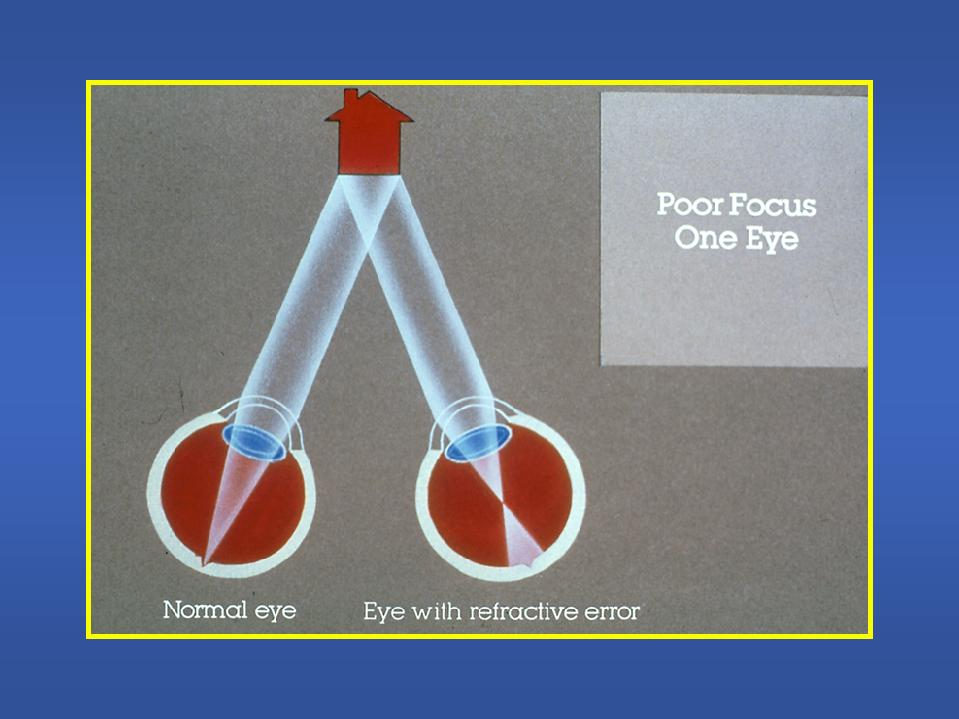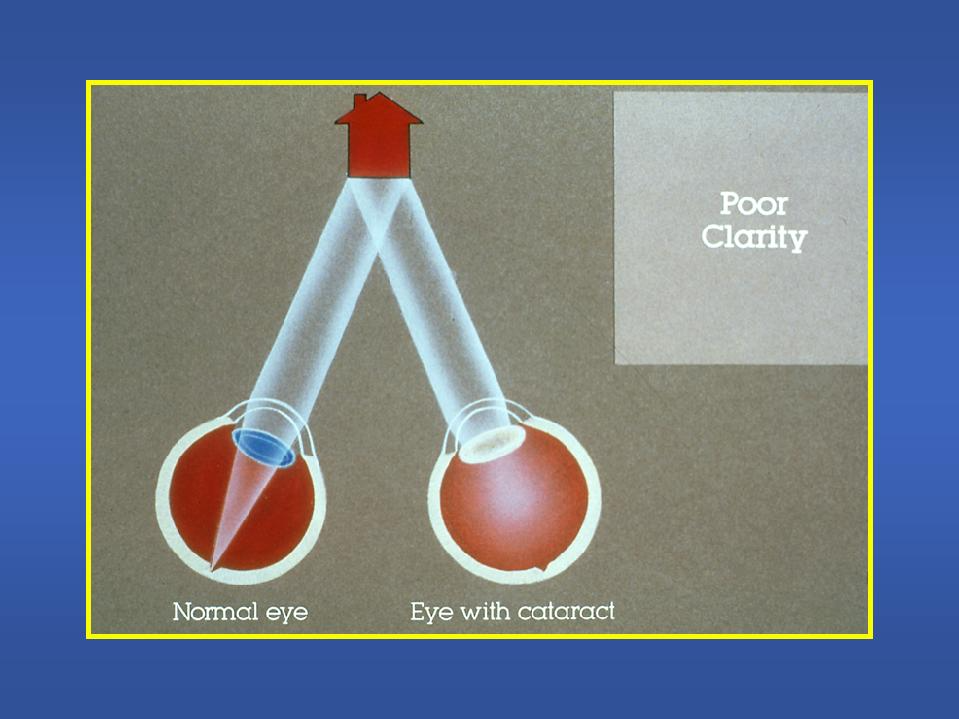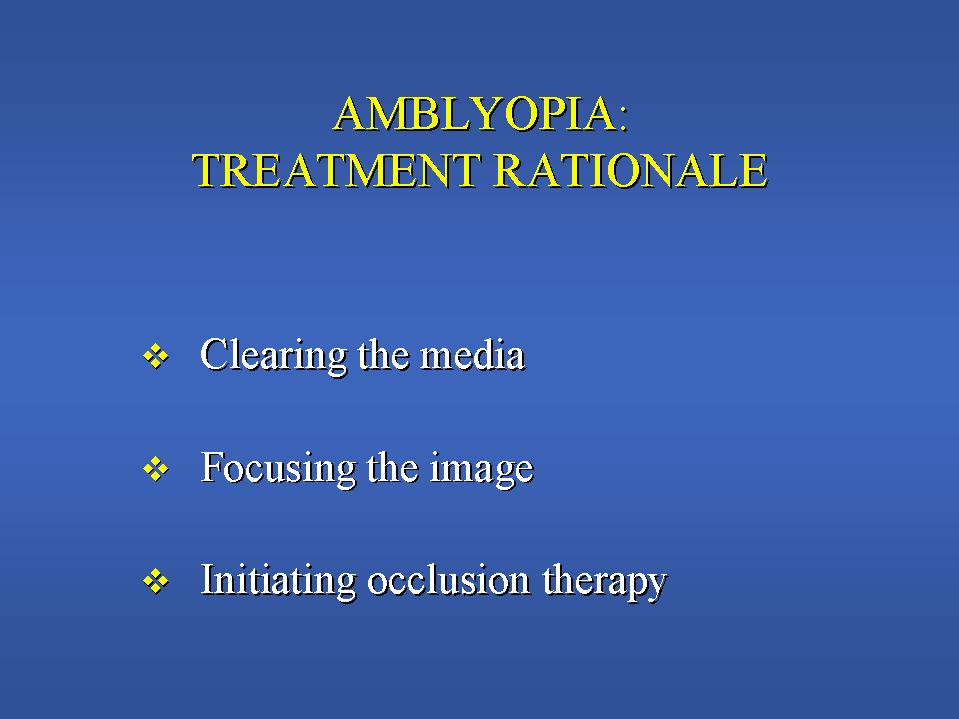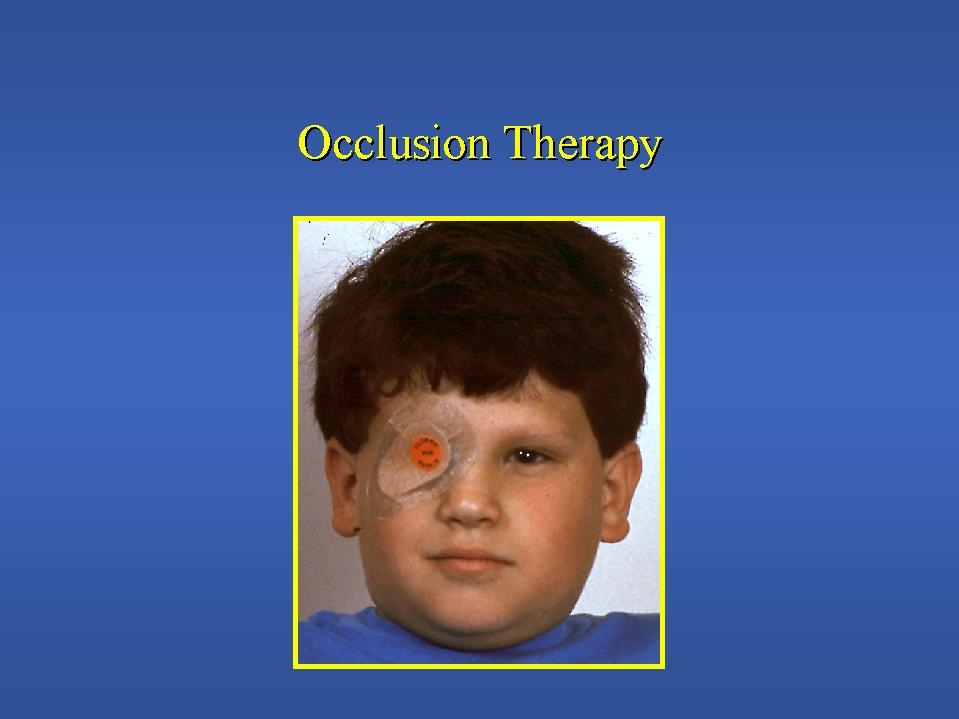AMBLYOPIA

- OVERVIEW OF PAEDIATRIC OPHTHALMOLOGY
- SPECIFIC EYE CONDITIONS
 |
|  The vision of a young infant or child is still developing. Anything, which interferes with this development, can result in permanent failure of vision- AMBLYOPIA.
The vision of a young infant or child is still developing. Anything, which interferes with this development, can result in permanent failure of vision- AMBLYOPIA.The factors which can be involved:
1. Poor aim- a turned eye.
2. Poor focus - the need for corrective lens.
3. An opacity in the line of vision- (Cataract)

1. POOR AIM- a turned eye If a child's eyes are not straight the vision of each cannot be correctly coordinated. While an adult suffers double vision when this occurs a child does not. Children quickly learn to suppress (turn off) the vision in the deviated eye. This suppression only occurs when both eyes are being used. More importantly the brain recognises that incorrect stimulation is coming from the deviated eye and cells in the visual area of the brain die. This results in reduced vision in the involved eye which becomes permanent if no treatment is given in the first years of life.
Therapy requires penalisation of the fixing eye to force development of vision in the involved eye. (see below for treatment)
 2. POOR FOCUS
2. POOR FOCUS If the eyes are focussed unequally then vision will not develop correctly in the unfocussed eye. This can result from Hypermetropia (farsightedness), Myopia (Shortsightedness) and/or Astigmatism.Again this reduced vision becomes permanent if it is not treated in the first years of life.
This form of Amblyopia requires correction of the refractive error with spectacles and penalisation of the better eye to force development of vision in the weaker eye. (see below for treatment)

3. AN OPACITY IN THE LINE OF VISION- (eg Cataract)Congenital cataract (from birth) results in an opacity in the line of vision this causes deep Amblyopia.
If this cataract is removed the focus of the eye is then extremely poor unless a lens is placed in the
system so Amblyopia may still occur.
A cataract developing slightly later (e.g. in the first few years of life) may not affect vision so
seriously. In this case the visual brain has functioned at some stage and is more likely to recover
vision with treatment (patching).
Thus we have 2 factors adding to the effect of visual failure after cataract extraction.
Time: The first months of life are critical. The failure to stimulate the visual brain in this period has a
very severe effect on visual development making it ALMOST IMPOSSIBLE TO DEVELOP
VISION LATER.
Focus: The more efficiently light is focussed on the retina the better the chance of achieving better
vision and therefore decreasing the risk of amblyopia. An intraocular lens will give the most natural
visual stimulation, a contact lens is not so good but again is more efficient than spectacle correction.
After a cataract is removed from a young child amblyopia therapy is always required to achieve the
best possible level of vision by overcoming amblyopia.

TREATMENT OF AMBLYOPIA: The development of the brain and visual pathways becomes permanently established at some stage in the first decade. Treatment of Amblyopia must occur before this age. The earlier it is commenced the better chance it can be corrected fully.
Where a congenital cataract is involved this correction should be commenced in the first few months of life!
With the other causes of amblyopia treatment can often result in some improvement of vision up to 8- 9 years of age. But it is unusual to obtain full resolution of Amblyopia after 6 years of age.
The earlier treatment is commenced the better chance has of being fully successful. The time to achieve improvement is much shorter in younger children.
Atropine drops to blur the vision in the better eye can be used in some cases as an alternative.
Note: Patching does not straighten the eye!

For further information regarding this page please contact: Denis Stark
Click to Return to Strabismus
Click to RETURN to Ptosis page
Click to Return to Cataract


